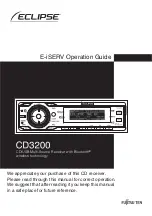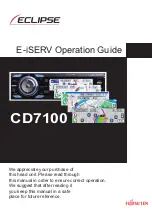
AEQ
PHOENIX STRATOS
94
At “I/F Setup“ fill in the “Local media port” (where the unit expects to receive RTP audio
traffic at). If you enable Symmetric RTP mode, the unit will send audio to the same port
where it is receiving it from. This is sometimes useful to overcome NAT routers.
The same screen allows you to configure the type and size of the receiving buffer and
FEC parameters as a function of the IP network quality so we have the shortest delay
while audio cuts are minimized or eliminated in poor quality networks (see paragraph
4.4 of this manual in order to select the optimal buffer configuration depending on your
application).
•
Return to the general configuration screen, check that the
selected coding algorithm in the green “ENCODER“ area
corresponding to that channel (CH1 or CH2) is correct, or
otherwise click on “Select codec” to change it. There are
several pre-defined profiles containing several particular
algorithms each one, with preference ordering. They can be
edited and more profiles can be added. The called unit will
accept the call using the first coding algorithm that it
supports from the list (independently of the profile selected in
that unit at that time).
•
Decide whether you will use the advanced automatic connection options or not:
o
“Autoanswer”: Automatic call answering for all incoming calls, or only those
corresponding to a predefined caller.
o
“Auto hang-up”: Automatic hang-up whenever audio packets are missed for a
given time.
o
“Permanent call and backup settings”: Allows you to activate automatic redial and
configure a backup interface and define the time and number of retries before
switching, the number or unit to call to and the used encoding. You can select no
backup interface (“NONE”) and activate the same way the “Auto-Redial” check
box when you simply want a call to be retried in case of connection falls.
The “On power up” check box and the associated drop-down menu allow you to
activate the automatic redial when equipment starts up. This option should be
activate for both peers of the connection for RTP or V35 communications and
only on the calling side for ISDN or SIP calls.
o
“Apply audio profile to incoming calls”: allows you to filter the SIP calls depending
on the encoding profile of the receiver.
















































